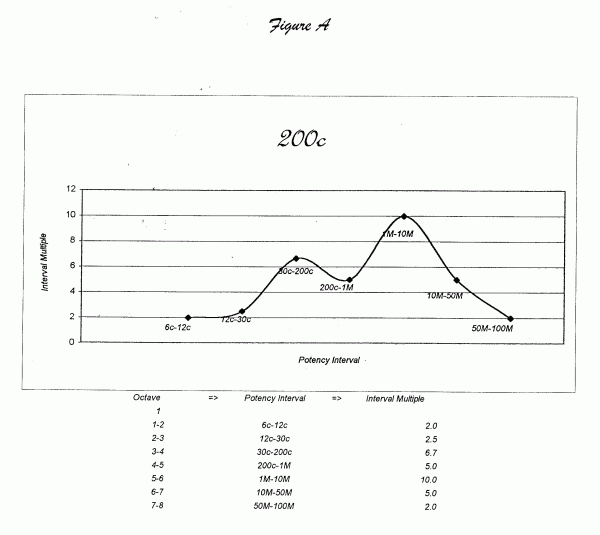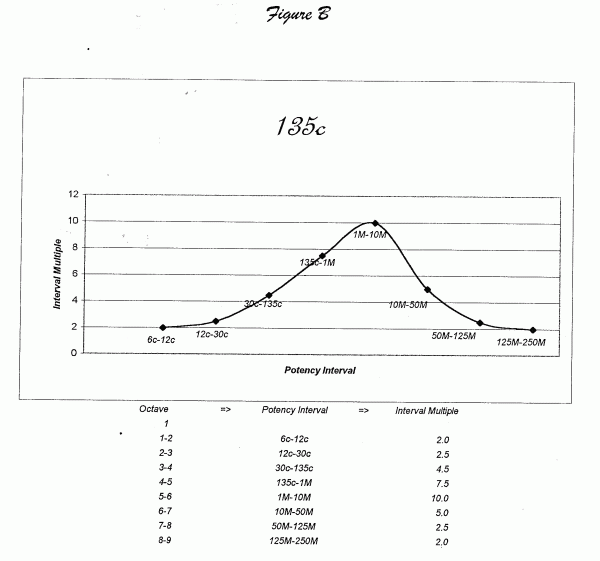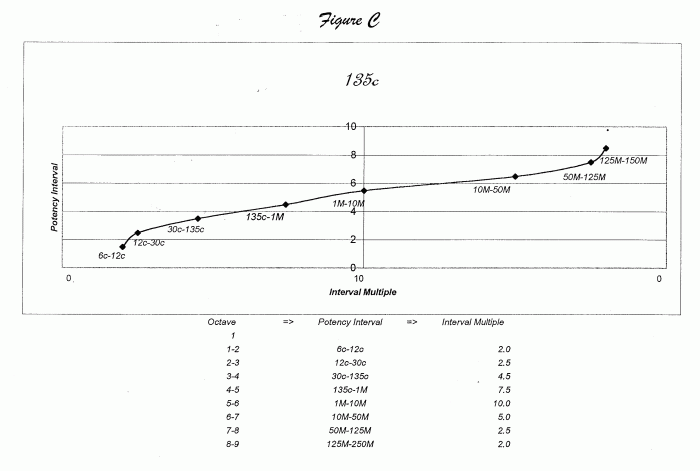When scientists and mathematicians speak of an “elegant system”, they are referring to a system with simple and clearly defined precepts which provides answers or results in a straight forward manner, without having to alter these precepts to address any contingency in the given field. Truly elegant systems are beautiful in their simplicity, yet awe-inspiring in their vastness. As homeopaths we are fortunate to work daily within such an elegant system.
Homeopathy is deceptively simple, requiring only a few rules or laws. The laws of Homeopathy are universal and do not require manipulation to allow the system to work freely in any clinical situation, regardless of the circumstance or species. It is this fullness of homeopathy which enables homeopaths to perform seeming miracles.
(When we speak of Universal Laws, we are referring to those concepts and practices which are elegant and which hold true when applied to different and varied disciplines. In the application of the concept in differing fields, one may find different nomenclature and different frameworks to communicate the concept, but the basic principles remain unchanged. Examples of such Universal Laws may include the Chaos Theory which is used to explain such diverse phenomena as weather patterns, economic trends, and coastal shoreline features; Rhythm and harmony which are exemplified in circadian rhythms, tidal flows, seasonal variations, music, and pulses; and, of course, Homeopathy which is equally applicable to any species of animal – including the human species – and to any set of symptoms.)
In nearly every aspect of Homeopathy, there is harmony, rhythm, and balance. It is this near perfect elegance that raises questions about one aspect of the daily practice of Homeopathy – Kent’s Octaves of Potency. [1]
(We have used the term “Octaves of Potency” to describe the series of commonly accepted potency selections. In his Lesser Writings, Kent says there are degrees or selections of potencies which match the excitability of the patient. He likens these degrees of potency to the octaves of music. This comparison of potency selection to the musical scales is further developed when Kent stated that the prescriber must not jump from the first to the last in the series as this would not “preserve the chord”. His advice was to “move in thirds and fifths” as you would with a musical chord. [1]
If there is a consistent complaint in the posology of homeopathy, it is with the 200th potency when the standard potencies – 6c, 12c, 30c, 200c, 1M, 10M, 50M, and CM – are given in ascending order to a patient. Kent listed his “Octaves” as having started at the 30th [1], but the octaves (degrees of selections of potencies) now accepted into common usage start at the 6th. Some Homeopaths have complained that the 200th is the most likely potency to cause severe aggravations when using the ascending scale of potency. Others wish for an intermediate potency between the 30th and the 200th, as they feel the jump between the 30th and the 200th is too great. [2]
Borrowing from Kent’s musical analogy once more, this apparent lack of harmony in the potency octaves, noticed when using ascending potencies of the same remedy, is much like playing a musical chord that has one note which is incorrect in the progression of that particular chord. This dischordant note may be played singly and may sound quite beautiful when played alone. But when the note is played in the progression of the scale, there is an obvious disharmony.
If there is any doubt as to the effect caused by a dischordant note, play a C Major chord (C, E, G, and C). The result is a very pleasing sound. Now substitute an F for the E in the chord (C, F, G, and C). The dischordant note ruins the harmony. Played by itself, the F note is pleasing to the ear. But in the progression of the C Major chord, the F note produces a noticeable disharmony.
This idea holds true for any chord and any note which is disharmonious to the particular chord. The point here is not to look at the exact numeric frequencies of the notes but at their interval relationships with one another.
The 200th potency, when given in an ascending series, acts much like this disharmonious note. Given as the sole potency for the patient, the 200th can yield marvelous results. But used in ascending scales (the patient is started at the 6th, progressed to the 12th as their health improves, taken to the 30th when the 12th is no longer potent enough, etc.), the 200th appears most likely to act harshly because it is in disharmony with the other potencies in the scale of potencies (Kent’s Octaves).
These thoughts (Thoughts, indeed, because whether the problem is real or imagined is immaterial. What is important is that the complaints have come from a variety of sources and suggest an area of less than perfect symmetry in the system of Homeopathy.) about such an otherwise harmonious system spurred us to look at the symmetry of potency and intervals in Kent’s scheme.
Not being mathematicians, we used a trial-and-error approach in graphing and plotting various aspects of Kent’s Octaves. In our explorations, the logical starting point seemed to be with logarithms, since the remedies are diluted by multiples of ten. When this approach failed to produce a workable graph without resorting to convoluted manipulations, we then explored coordinate systems which used the absolute potency numbers. This again failed to produce an elegant, usable pattern in the graph. It was not until we used the 6th as the base potency and plotted the interval multiples of the potency octaves against the actual interval that we found a format which would easily, logically, and without manipulation show the asymmetry of the 200th in the Octaves of Potency.
This graphic illustration solidified our view that the harmony of the Octaves of Potency lay not in the “frequency” or exact numeric designation of the potency, but rather in the relationship of one potency to the adjacent potencies in the scale. It is the symmetrical relationship of the multiples of the intervals between adjacent potencies, not the actual frequencies or numeric designations of the potencies, which fails when the 200th is used in the progression of the Octaves of Potency.
In plotting the intervals by multiples of the preceding potency rather than directly as logarithms or as potency values, we found that the 200th was the only potency to be in disharmony above the curve (when plotted on a standard XY-coordinate graph). We reasoned this discontinuity above the curve to be supportive of the thoughts of other homeopaths – that the 200th is the most likely potency to exhibit undesirable results (aggravations) since it is the only potency to land above the curve.
There is also disharmony in the very high potencies, with the CM falling below the curve. It is likely that this potency has not caused comment because it is lower than the next potency indicated by the symmetrical interval multiples of the graph. The effects of this disharmony may also be less clinically evident because not as many Homeopaths prescribe at the CM level as prescribe at the 200th.
Simply stated, the interval from 6c to 12c is a multiple of 2; from 12c to 30c, a multiple of 2.5; from 30c to 200c, a multiple of approximately 6.667; from 200c to 1M, a multiple of 5; from 1M to 10M, a multiple of 10; from 10M to 50M, a multiple of 5; from 50M to CM or 100M, a multiple of 2.
To plot this curve, use a standard XY-coordinate graph with the X-axis representing the potency intervals from one through seven and the Y-axis representing the interval multiples from one to ten. Plotting these interval/multiple coordinates creates an asymmetry – a curve which gives a rise from the 6th to the 200th, a dip to the 1M, a rise to the 10M, then a smooth falling to the CM. The asymmetric wrinkly in this curve is caused by the interval multiple between 30c and 200c, indicating that 200c is out of harmony with the other potencies. (See Figure A.)

Because Homeopathy has shown itself to be an elegant system, with harmony and rhythm, with echoes Universal Laws, one would expect the curve created in this graph to be symmetrical and in balance. It is not. Therefore, this lack of symmetry indicates an aspect in the practice of Homeopathy (the use of these standard potencies in ascending order according to Kent’s Octaves) that is not in balance with the greater laws of the Universe.
In order to manipulate the previously described asymmetric curve into one of symmetry and to thus restore balance and elegance to the system, one can trace a cure which “smoothes the wrinkle” – a curve which connects the third interval to the fifth interval, and smoothes the glitch at the fourth interval. When this has been done, we can find the symmetric interval and, thus, the potency more harmonious than the customary 200th.
Using the same axis values as described above, plot the same interval/multiple coordinates but omit the fourth interval/multiple. Redraw the graph smoothly connecting the third and the fifth interval/multiple. Now replot the fourth interval/multiple to fall on the graph line. The result is a multiple of 4.5 from the third interval and approximately 7.5 from the fifth interval. This interval/multiple corresponds to a potency of 135c, rather than 200c. Redrawing the curve in this manner produces a symmetrical Bell-shaped curve. (See Figure B.)

Since Bell-shaped curves are a universally recognized element of distribution patterns, we felt the achievement of such a graph was significant. It not only supported the use of the relationships of the potency intervals of the Octaves, but further reinforced the premise that there are indeed Universal Laws which govern Homeopathy.
On the upper end of the curve, we found that to be in perfect balance the CM potency would shift to 125M and the next potency in this harmonic would be 250M. The effects of the “disharmony of potency” at these higher potency levels should be of less clinical consequence since these potencies are less frequently used. Also, the next higher potencies suggested by Kent’s Octaves (CM) falls below the curve. Clinically, we recognize a lesser potency has less potential for aggravation than does a relatively higher potency. This again emphasizes the point that the 200th is potentially more aggravating when used in sequence because it lies above the harmonic curve.
Alternately, we can plot the values using the greatest interval multiple (which is 10, the multiple between 1M and 10M) as the intersection of the Y-axis on the X-axis. This allows for the other interval multiples t o increase toward the Y-axis at the interval multiple of 10 then to decrease from the Y-axis from left to right. Here we see a much different, but still symmetrical, curve.
In graphing the interval multiples in this way, we are imitating the musical scale which uses “Middle C” as the same relative reference point as our Y-axis. (See Figure C.)

We have not had the opportunity to apply this theory in practice. Maybe it is more of a mathematical oddity than a real issue in Homeopathy. Still, for the sake of symmetry and balance, and for the elegance of the system of homeopathy, it has been an interesting mental exercise to be able to relate perceived problems in the use of a particular potency with a point of asymmetry in the interval curve. This approach offers an opportunity to restore harmony while answering the complaints of the 200th being a potentially disruptive potency.
If at this point you have not had enough mental exercise, take one step further. How would the results of our prescribing change if we followed this interval scale regardless of our starting point? For example, we start a patient a 12c. Before long this potency may need to be increased. In the current practice paradigm, 30c would be our choice, to be followed by 200c. In the practice guided by the intervals of harmony, we would follow 12c with a potency a multiple of 2 higher (the multiple between the first and second potencies.) or a 24c. The 24c would be followed by a potency 2.5 higher (the multiple between the second and third potencies) or a 60c. And so on.
Following this scheme, we would not only drive the homeopathic pharmacies crazy, we would also discover the wonderful nuances in an infinite array of potencies in sequence.
While we don’t expect anyone to routinely prescribe using this scheme, the appreciation of the relationships between adjacent potencies might open further avenues of explorations in our treatment of sensitive patients.
In the much broader scope, if the workings of homeopathy can be related to concepts of other accepted disciplines and it can be consistently shown that the phenomena of homeopathy appear to share explanations common to current working models in other disciplines, the validity of homeopathy may be increased among the ranks of the skeptics.
—————————————————
Special acknowledgment t to Kathy Crown, MBA, of the Gannett Health Center at Cornell University and Keith Ouchley, PhD, of the Nature Conservancy for their assistance in generating the graphs and for their work on the rest of the data which was not presented in graphable form.
References
1. Kent, J.T. Kent’s New Remedies, Clinical Cases, Lesser Writings, Aphorisms, and Precepts. New Delhi, India:B.Jain Publishers Pvt. Ltd. 1992
2. Authors personal conversations and correspondences with various Homeopaths.
ABSTRACT: RETHINKING KENT’S OCTAVES
Glen Dupree, DVM, CVH and Susan Beal, DVM
Using Kent’s Octaves in ascending potencies presents us with a source of disharmony in the otherwise elegant and harmonious system of Homeopathy. This can be represented mathematically using a standard XY-coordinate system. When the potencies are plotted symmetrically, a potency of 135c is suggested rather than the commonly used 200c. This approach also allows us to apply the harmonics of scale as is used in music to further validate the universal nature of the laws of Homeopathy.
Key words: Graphs, Kent’s Octaves, Posology, Potency.
Glen Dupree, DVM, CVH and Susan Beal, DVM
Journal of the American Institute of Homeopathy
Vol. 93 No. 2 Summer 2000 pg. 89-93
Glen Dupree, DVM
P.O.Box 1447
St. Francisville, LA 70775
225.721.1481






